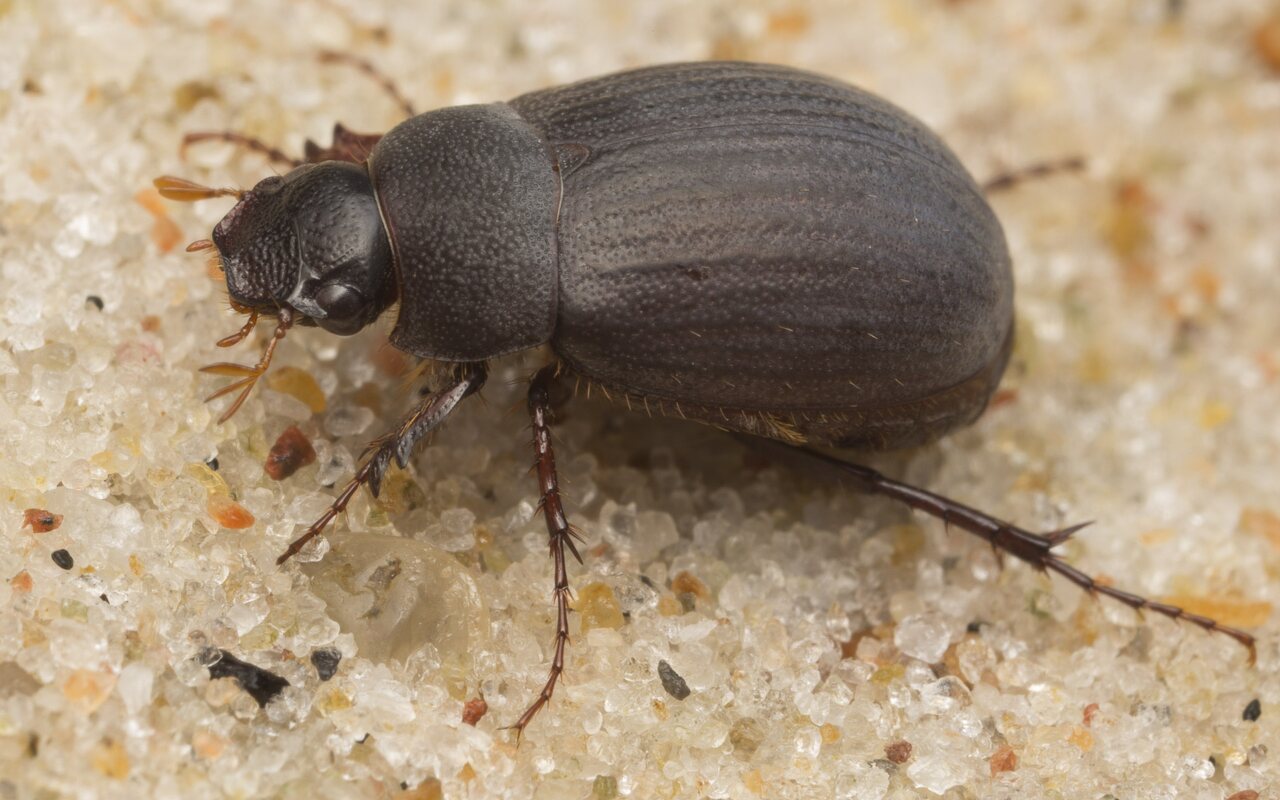
Maladera holosericea · juosvasis grambuoliukas
- Dunkler Seidenkäfer
- Skræntoldenborre
- juosvasis grambuoliukas
- ćmawiec ciemny
- Daggborre
Palearctic species, found in Europe, Siberia, cantral Asia. In Central Europe it is the only representative of the genus. A xerothermophilic insect, distributed from the lowlands to the foothills. It inhabits dry areas with a sandy substrate, including forest steppes, steppes, forest edges, grassy slopes, ruderal areas and human settlements. Active adults are found from April to July, and the next generation from September to October and they overwinter. They fly at dusk and are attracted to artificial light. Underground grubs feed on the roots of herbaceous plants.
A beetle with a strongly convex, oval body, slightly expanded towards the rear, 6 to 9 mm long. The color is black-brown to black, rarely rusty-brown, and the dorsal side of the body (except head) with a velvety ash-gray coating. The male eyes are large and ten-segmented antennae with a club longer than the rest part of antennae. In the female, the eyes are smaller and the club is shorter. The elytra have sparse, short, brittle setae on the surface, and hair on the side edges. The elytra with shallow striae and rows of scattered dots. The abdomen has a single row of short setae in the middle on each sternite.
‥
0 comments
Add a comment